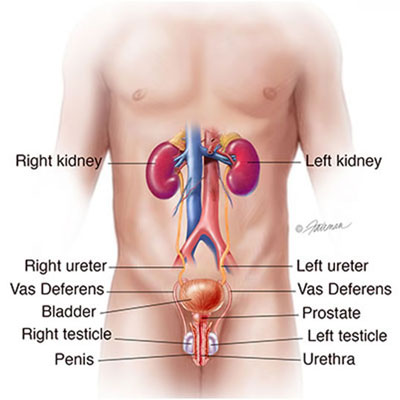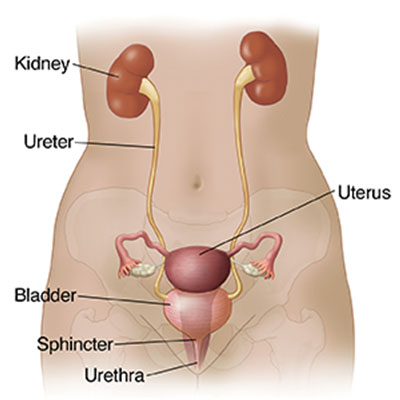Structure of Urinary System
The urinary system refers to the structures that produce and conduct urine to the point of excretion. The human body normally has two paired kidneys, one on the left and one on the right. Urine is formed by nephrons, the functional unit of the kidney, and then flows through a system of converging tubules called collecting ducts. The collecting ducts join together to form minor calyces, then major calyces, which ultimately join the pelvis of the kidney (renal pelvis). Urine flows from the renal pelvis into the ureter, a tube-like structure that carries the urine from the kidneys into the bladder.
During urination, urine stored in the bladder is discharged through the urethra. In males, the urethra begins at the internal urethral orifice in the trigone of the bladder, continues through the external urethral orifice, and then becomes the prostatic, membranous, bulbar, and penile urethra. Urine exits through the external urethral meatus. The female urethra is much shorter, beginning at the bladder neck and terminating in the vaginal vestibule.



